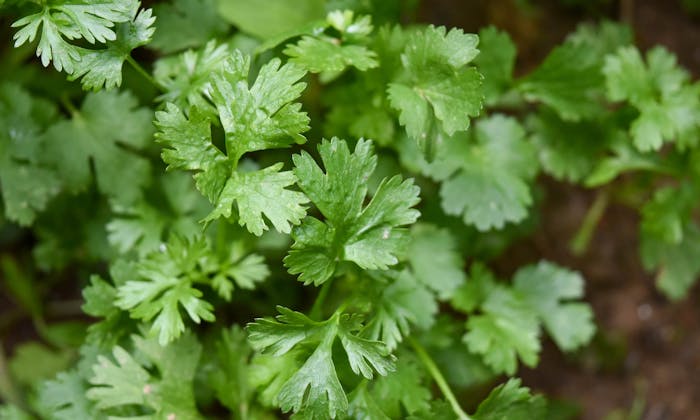A favorite herb to always have on hand, cilantro is an essential ingredient in many cuisines around the world, from Mexican, to Indian to Vietnamese
By far, cilantro is the most used herb in my house, especially if we are talking about fresh herbs. And I really dislike buying it from the grocery store most of the time. That is because if you aren't selective about where you buy it, it can be expensive. My biggest pet peave about buying cilantro from the supermarket is the packaging.
Sometimes you can only find it in those small, hard, clamshell plastic containers. What a waste! That packaging must cost a dozen times what the herb it contains costs to make. This is my complaint about a lot of herbs, but cilantro is a prime example. That is why if I need to buy it, I buy it from Mexican, Asian or Indian market since their customers know how to use it and aren't going to buy it in such small quantities. Even better, of course, is to always have some growing.
Where does it grow?
Cilantro is so ubiquitous around the world, and has been for so long, experts can't confidently pinpoint a specific geographic place where it is native. But it seems to be from around Western Asia and Southern Europe, think Mediterranean climate.
Usage of coriander and cilantro is ubiquitous throughout the world. I think of it often in relation to Asian, Indian, and Mexican cuisines. Specifically Bahn mi, Indian "green chutney", mexican salsa. The coriander seed gives Belgian wheat beers like Hoegaarden their distinctive flavor (or even Blue Moon which is an American beer brewed in that style). And coriander seed are frequently used when pickling vegetables.
It is used mainly for the fresh leaves which have a distictive cool flavor and for their seeds. It's culinary use has been traced back as far as Broze Age Macedonia. Some regions refer to the leaves and seeds both as "coriander", but in some places the leaves are called "cilantro" while only the seeds are called "coriander."
Growing Cilantro
Buy cilantro in large packets of seeds. If you are growing for the green cilantro leaves look for a variety labelled with the words "slow-bolt" (or "slo-bolt").
Some people recommend scarifying cilantro seeds before you sow them. I think that is too much work that is completely unneccessary. If you want to speed up germination, you can soak the seeds for 24-48 hours, but even this isn't necessary. Cilantro takes only about a week to germinate.
Cilantro grows quickly. You should be able to start harvesting within a couple of months of sowing the seeds. Cilantro loves sun, but will bolt in too much heat. In order to have a constant supply of cilantro, you need to keep planting it every couple of weeks. In zone 10 you can grow it through spring and fall. In the summer you will have to do something to manage the intense heat.
Like a lot of plants, cilantro prefers loose soil. But I have had tremendous success growing it in my hard clay, at least during the cooler months. I spinkle it around the garden, some in the herb garden, some next to tomatoes they will most likely be served with eventually.
In the warmer months I grow it in pots, in loose potting soil, where it has shade most of the day. Even slow-bolting cilantro can be challenging to grow through summer as it wants to flower. You can get away with using cilantro that has bolted for a little while. I dislike the bitter flavor it takes on once it has bolted, but I have known others to be more tolerant of the change.
Cilantro will also self-sow when allowed to bolt. I keep thinking in terms of cilantro, because we use the leaves in my family. If you are growing for seed, you will want to avoid fertilizer as fertilizer encourages growth over fruiting.
Recipes
Pico de Gallo is a quick and simple salsa, ideal for highlighting the tomatoes and chilis you've been growing in your garden!

